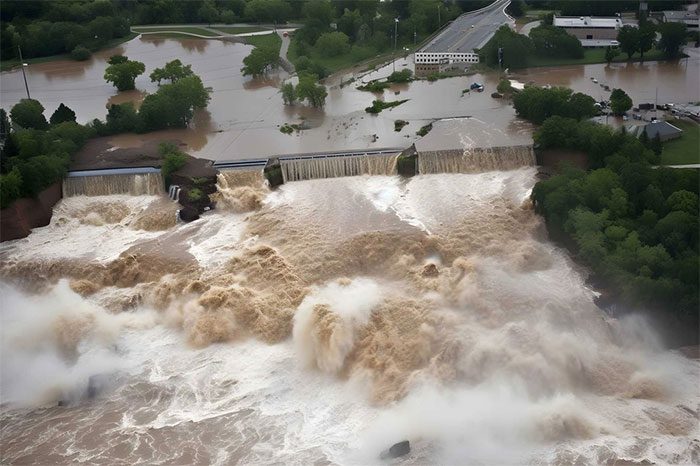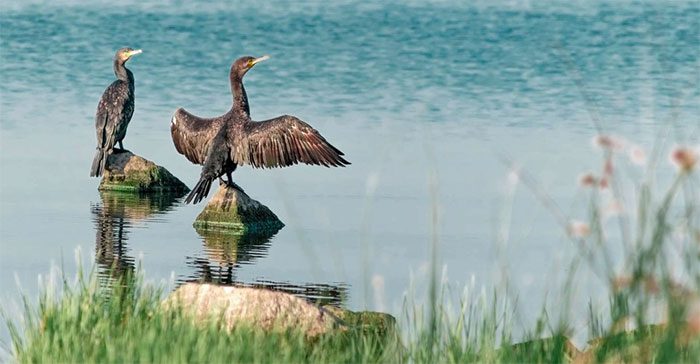Seven months after the Kakhovka Dam was destroyed, it has led to devastating impacts on wildlife habitats. This is an ecological disaster caused by the ongoing conflict.
Despite the bombardment during the conflict with Russia, Ukrainian scientists are still working on the front lines, observing and studying the ecological consequences following the destruction of the Kakhovka hydroelectric dam.
A Massive Reservoir Drained in Days

Nova Kakhovka Dam plays a crucial role in economic development in Kherson, Ukraine (Image: Futura Science).
On June 6, 2023, Ukraine accused Russia of blowing up the Nova Kakhovka hydroelectric dam. Within hours, the vast reservoir drained, flooding areas downstream and raising concerns for the cooling system at the Zaporizhzhia Nuclear Power Plant.
Fortunately, a nuclear disaster did not occur, but Ukraine is facing an ecological tragedy.
In reality, trillions of cubic meters of water have flowed downstream from the dam, flooding over 620 km2 of agricultural land, residential areas, and nature reserves.
This incident has severely impacted the ecosystem that has resided along the Dnieper River for decades.
500,000 Tons of Freshwater Mussels Decaying
Scientists have discovered the death of many organisms in the reservoir, with billions of freshwater mussels decaying on the dry lakebed, and wild sturgeons migrating upstream to spawn below the dam have also vanished.
The dam served as a laboratory for the reproduction of various species, particularly the critically endangered Danube sturgeon. The destruction of the dam has also led to the extinction of many species of animals living in estuaries and ecosystems.
The current losses are alarming, but restoring the natural state of this area is entirely feasible if a new dam is constructed. This would lead to the return of wildlife.

Biodiversity in the Kherson area will take many years to recover. (Image: Futura Science).
The Ukrainian government has pledged to rebuild the dam once the conflict ends. It plays a crucial role in the nation’s economy, particularly by facilitating normal hydroelectric operations, nuclear power plants, and providing drinking water to several regions.
Existing Chemical Pollution Issues
If wildlife is to quickly return to the banks of the Dnieper River, another concern for scientists is the chemical pollution of water and soil due to the Kakhovka Dam’s collapse.
In fact, water and sediment analyses have revealed the presence of multiple pollutants, such as heavy metals and PCBs (polychlorinated biphenyls). These have accumulated over 50 years in the sediment of the reservoir, and the dam’s collapse has caused these chemicals to spread hundreds of kilometers downstream.
Notably, these particles degrade very slowly in the environment, making them highly toxic. The loss of billions of mussels, which act as natural water filters, complicates the restoration of water quality.
Of course, the ongoing conflict currently prevents an accurate assessment of the environmental situation, but one thing is certain: the Kakhovka Dam is a prime example of the ecological disasters caused by war.



















































